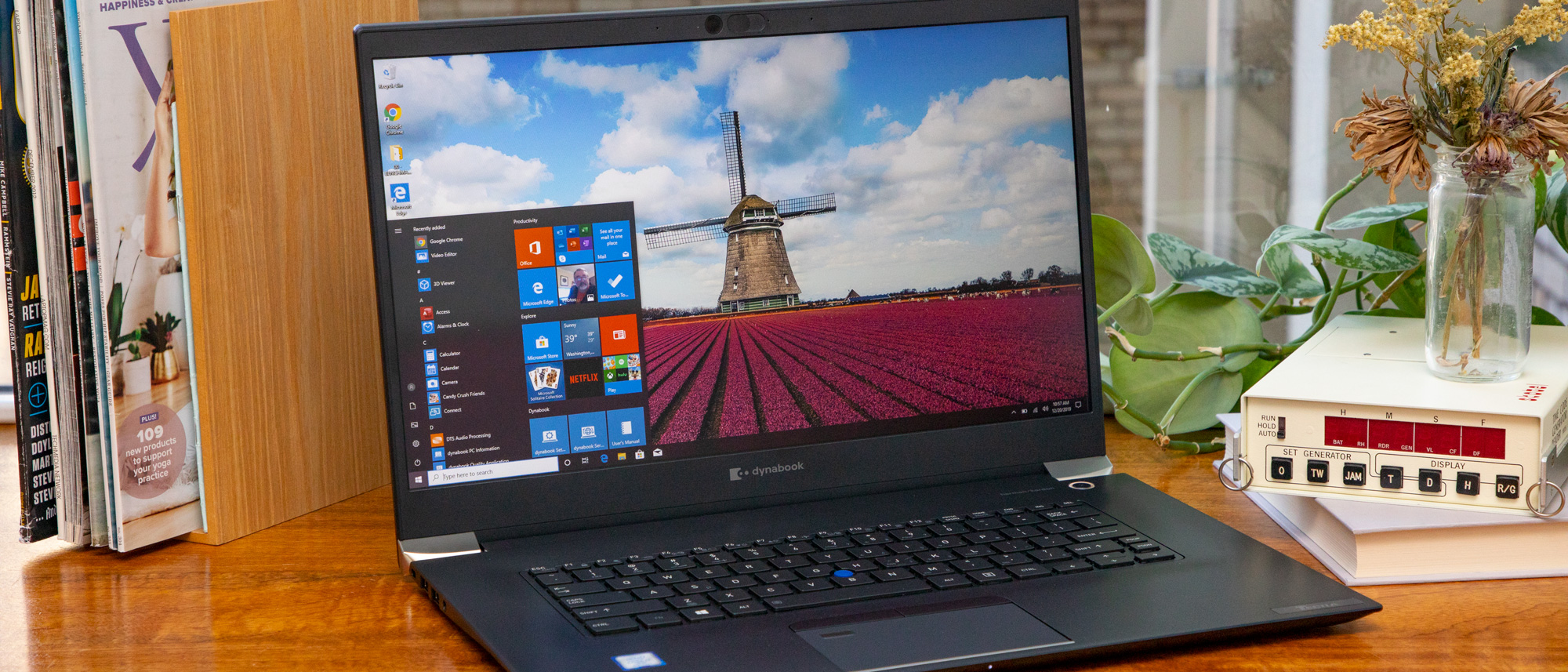Laptop Mag Verdict
The Dynabook Terca X50-F is an attractive and solid, if unspectacular, laptop that falls short in key areas where it could have and/or should have excelled.
Pros
- +
Attractive chassis
- +
Blistering-fast transfer speeds
- +
Solid performance
- +
Good security features
Cons
- -
Dim, dull display
- -
Below-average battery life
Why you can trust Laptop Mag
I can almost hear the company echoing Terry Malloy’s classic lament from 1954’s On the Waterfront, “You don’t understand...I could’ve had class. I coulda been a contender. I coulda been somebody…”
The brand we knew as Toshiba is gone and Dynabook stands in its ashes. The reinvented brand is relaunching some of its former brands under the new moniker, starting with the Dynabook Terca X50-F. For $2,144 ($1,684 starting) you get a decent first attempt at a second chance. The notebook offers decent performance and great file transfer speeds. However, a subpar display and battery life show that Dynabook’s going to need some time to knock off the ring rust.
Dynabook Tecra X50-F pricing and configurations
The starting configuration of the Tecra X50-F costs $1,684 and has a 1.6-GHz Intel Core i5-8250U processor with 4 GB of RAM, a 256 GB M.2 SATA SSD and Intel UHD 620 Graphics GPU. Our $2,144 review unit adds an Intel Core i7-8665U processor, 16GB of RAM, a 256GB m.2 SATA SSD, Intel UHD Graphics GPU and Intel vPro. For $2,929, you get 32GB of RAM, a 1TB M.2 NVMe PCIe SSD, and vPro.
For an additional charge, Dynabook also offers optional add-ons such as a touchscreen ($70) and Smart Card slot ($10).
Dynabook Tecra X50-F design
First and foremost, the Dynabook Tecra X50 is a gorgeous machine. Its onyx-blue metallic magnesium alloy chassis looks fantastic, and is quite smooth to the touch. Shiny metallic accents – from the emblem to the hinges – complement the deep-bluish hue. I’m not sure how I feel about Dynabook’s logo, but I guess it could grow on me. Although I found that the Tecra’s outer housing smudges rather easily (as did the touchpad), a quick wipe down with the included microfiber cloth quickly remedied that issue.
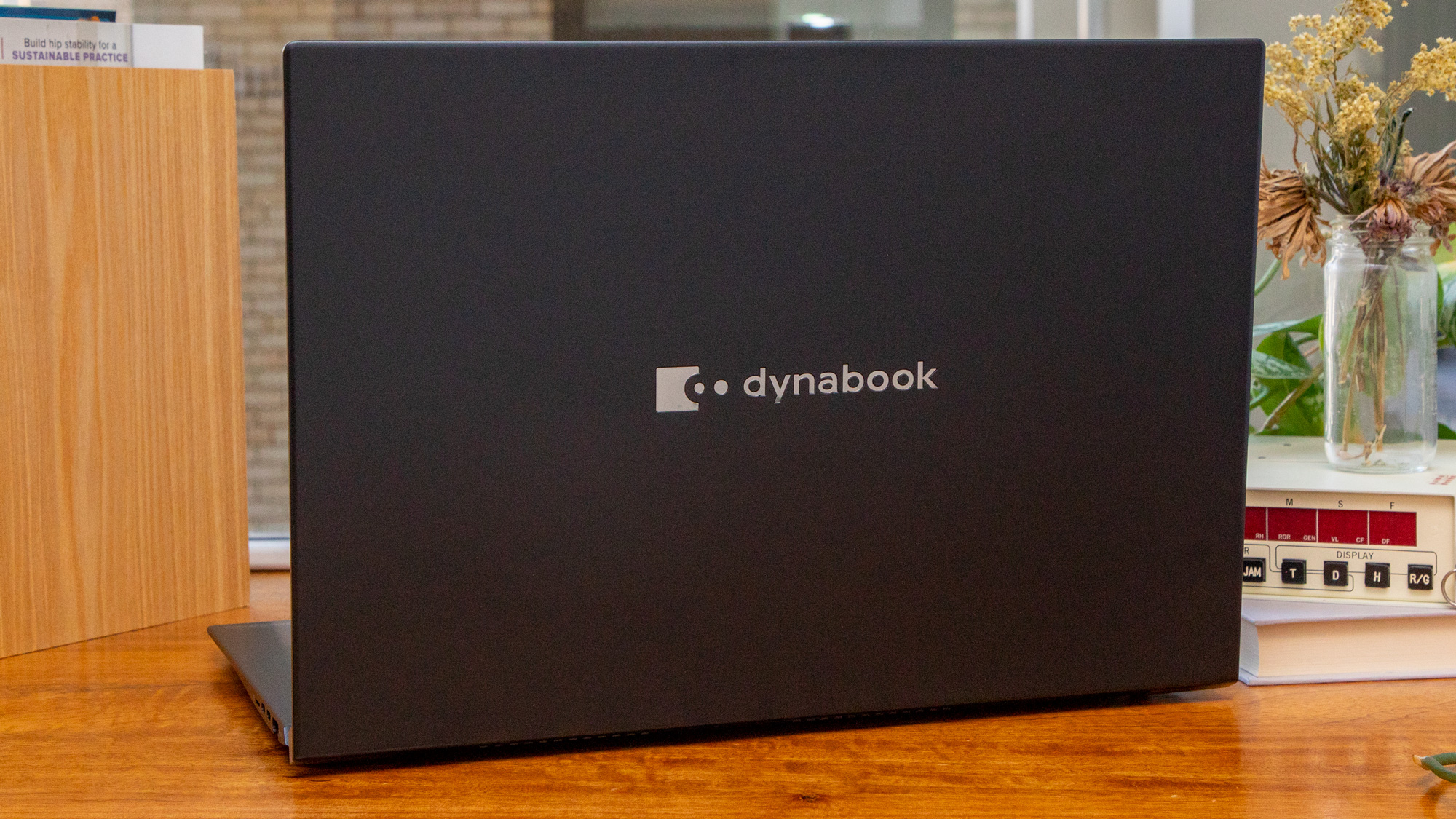
The only plastic in the machine is the screen bezel, which is acceptably thin for a 15.6-inch screen, the dedicated keys and the button for the pointer. I was surprised at how cramped the keyboard looked despite having plenty of real estate to spare. It looked like someone slapped a 13-inch keyboard into a 15.6-inch chassis at the last minute. I am a fan of the small Tecra logo in the small recess on the front right corner of the keyboard deck.
At 3.2 pounds, the 14.1 x 9.8 x 0.7-inch Dynabook is on the heavier side of the laptop scale. It’s lighter than the Dell Latitude 7400 (3.6 pounds, 12.7 x 8.4 x 0.7 inches), but heavier than both the Acer TravelMate P6 P614 (2.7 pounds, 12.8 x 9.1 x 0.7 inches) and the Lenovo ThinkPad X1 Carbon (2019) (2.1 pounds, 12.7 x 8.5 x 0.6 inches). However, that’s to be expected since those two machines are smaller systems.
Sign up to receive The Snapshot, a free special dispatch from Laptop Mag, in your inbox.
Dynabook Tecra X50-F security
As this is a business laptop, the Tecra X50-F offers hardware security enhancements like Trusted Platform Module 2.0 (TPM), an optional smart card reader and its own proprietary BIOS. There are also optional biometric security features, such as: an integrated infrared camera and a fingerprint reader for Windows Hello; the latter is a swipe reader part of the Synaptics touchpad. Personally, I don’t really like the fingerprint reader since it relies on swiping and thus is less accurate. I’m a fan of the webcam shutter, which is a very cool (and necessary) addition in my mind.
Dynabook Tecra X50-F ports
The number of ports offered on the Tecra X50-F is great for such a thin computer.

You get a pair of Thunderbolt 3 ports and an HDMI port on the right with a microSD reader.

Along the left, you’ll find two USB 3.1 Type-A ports, a headset jack and a Kensington lock slot.
Dynabook Tecra X50-F display
While not awful, the Dynabook’s overall screen brightness is lacking. I watched the latest episode of The Mandalorian on the 15.6-inch, 1920 x 1080 touchscreen, and it was definitely murky in the darker scenes early on in the grungy space port and on Mando’s ship.
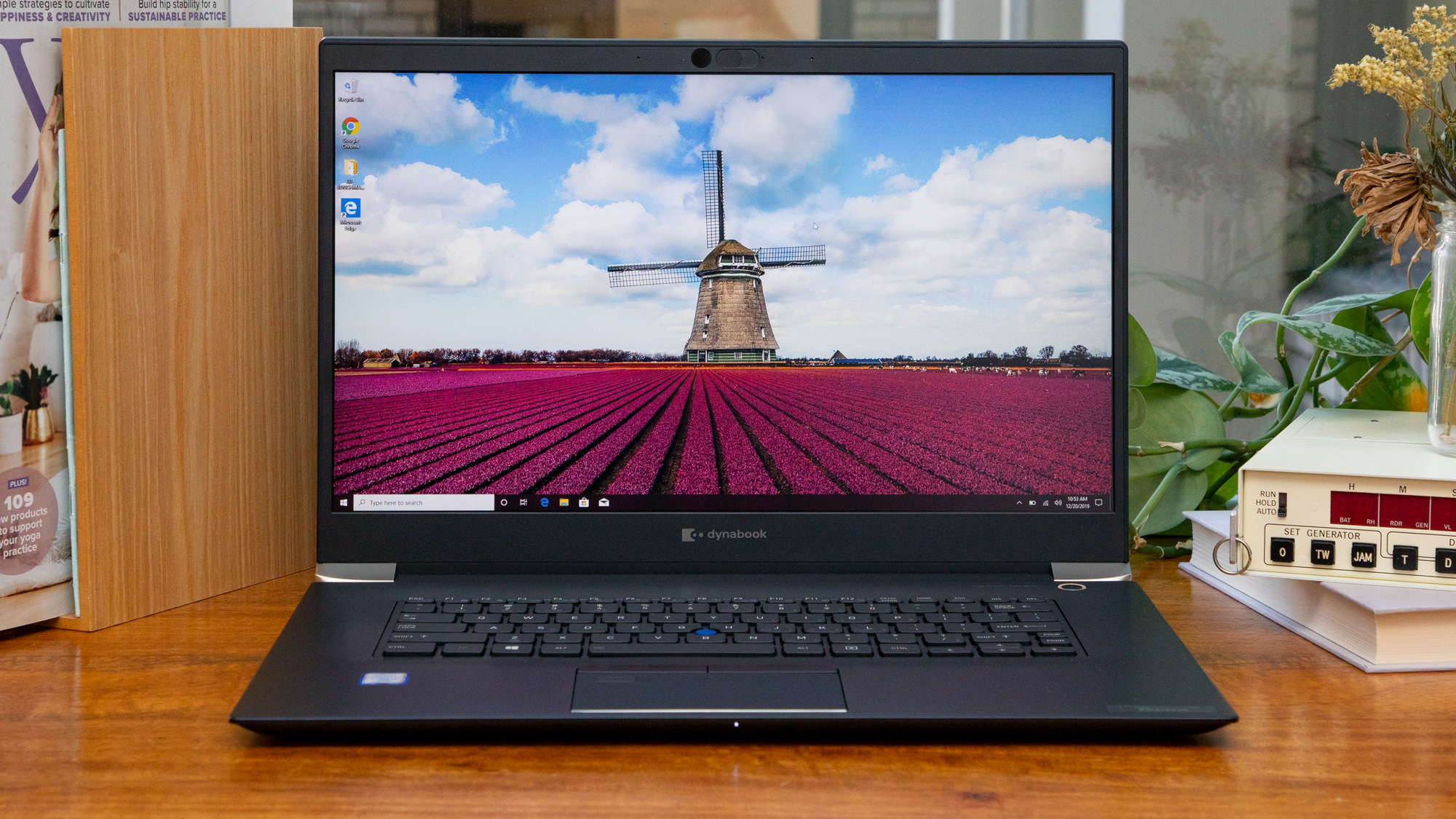
I knew by watching The Mandalorian that the Tecra X50-F’s panel was dull, but not this dull. The laptop only measured 60% of the sRGB color gamut, which is only half of the 121% premium laptop average. None of the competing systems matched that average, but they all (ThinkPad X1 - 109%, Latitude 7400 - 111% and Travelmate - 113%) were much higher than the Dynabook.
The panel only averaged 260 nits of brightness, which is well below the 361-nit premium laptop average. The TravelMate scored fairly higher at 299 nits, while the ThinkPad and the Latitude 7400 reached 336 and 342 nits, respectively.Therefore, the Tecra X50-F display is entirely competent for office use, but don’t wander near a window or even outside as the screen images will get glared out of existence.
The 10-point capacitive touchscreen was quick and responsive, easily keeping up with my frenetic doodling in Paint.
Dynabook Tecra X50-F keyboard and touchpad
While the Dynabook’s island-style keyboard has a nice feel to it, it was too small and/or cramped for my liking. And you don’t even get a numeric keypad, which would have made the overall-cramped nature of the keyboard understandable.
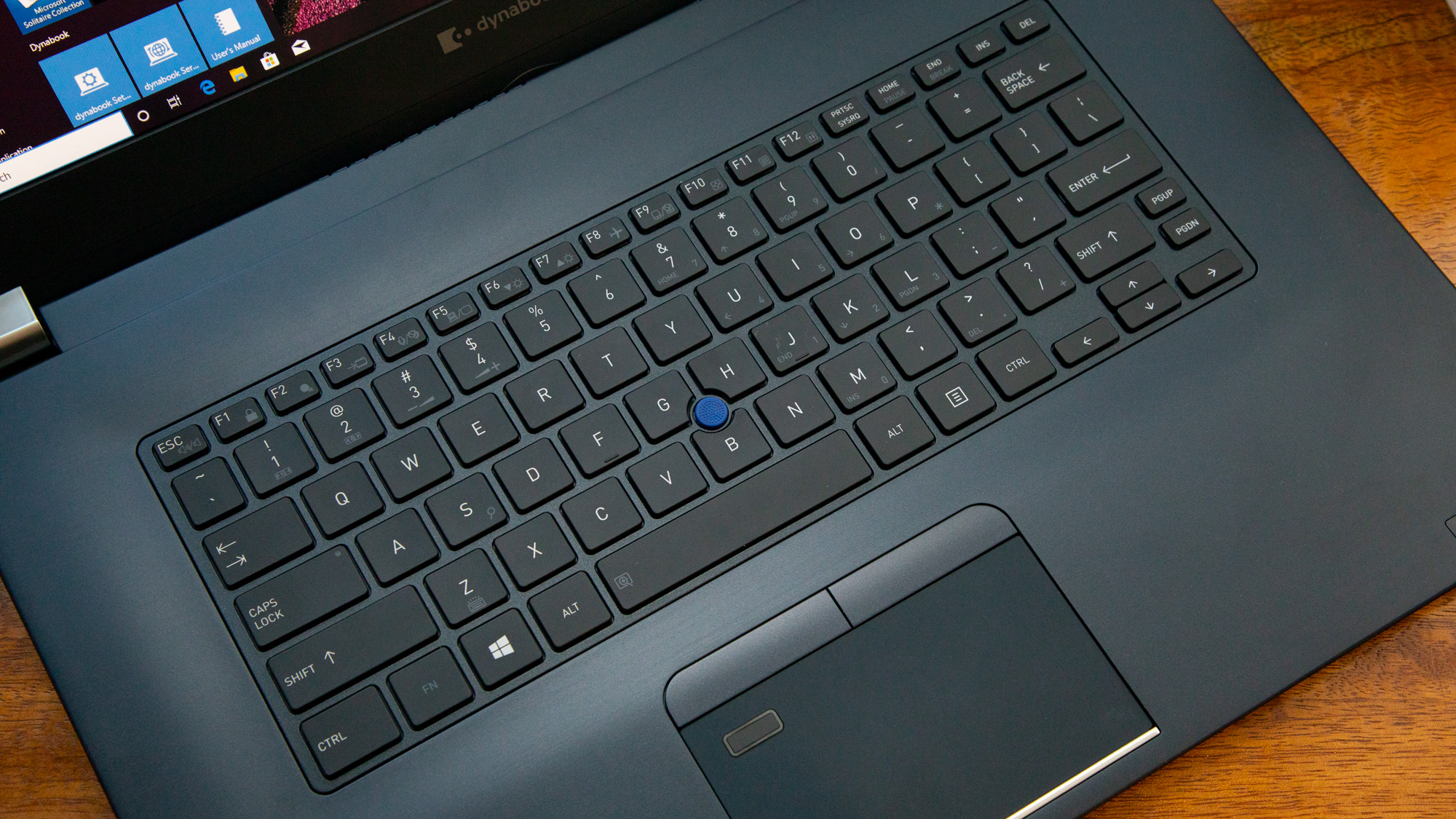
In general, I think the keyboard of the X50-F could be improved with better lighting, keycap lettering (secondary functions are difficult to read) and a larger overall size.
The 3.9 x 2.2-inch touchpad uses Synaptics' SecurePad software instead of Precision drivers. It's perfectly fine as touchpads go, but it can get a bit smudged and/or smeary as I mentioned previously. I was happy to see that the integrated fingerprint scanner in the top-left corner didn’t interfere with my navigating. And Windows 10 gestures – such as two-finger scroll, pinch-zoom and three-finger press – worked well.
Dynabook Tecra X50-F audio
As far as sound goes, the Tecra X50-F is pretty meh. Although it has harman/kardon stereo speakers and DTS audio processing in the form of an app/equalizer, neither seemed to make much difference one way or another. I played a couple of suitably funky tracks off the new Prince 1999 Super Deluxe album as well as a couple of heavier, old school Faith No More tracks, and the sound quality was adequate – nothing terrible or screechy came through the speakers, but no auditory magic surprised or blew me away either.For a business machine I wouldn’t expect, or need, much more.
Dynabook Tecra X50-F Performance
Powering the Dynabook Tecra X50-F is an Intel Core i7-8665U processor with 16 GB of RAM which, to be real, is two generations behind at this point and somewhat underwhelming. But, that’s the price you pay for vPro. Despite its shortcomings, the notebook can run Word, PowerPoint and have several Google Chrome tabs open without noticeable issues. What you will immediately notice, though, is that the cooling fan will ramp up into overdrive when you put stress on the CPU: It was so noticeable at times that it roused my cat out of his slumber, and he came over to investigate what was up almost every time the fan kicked on.
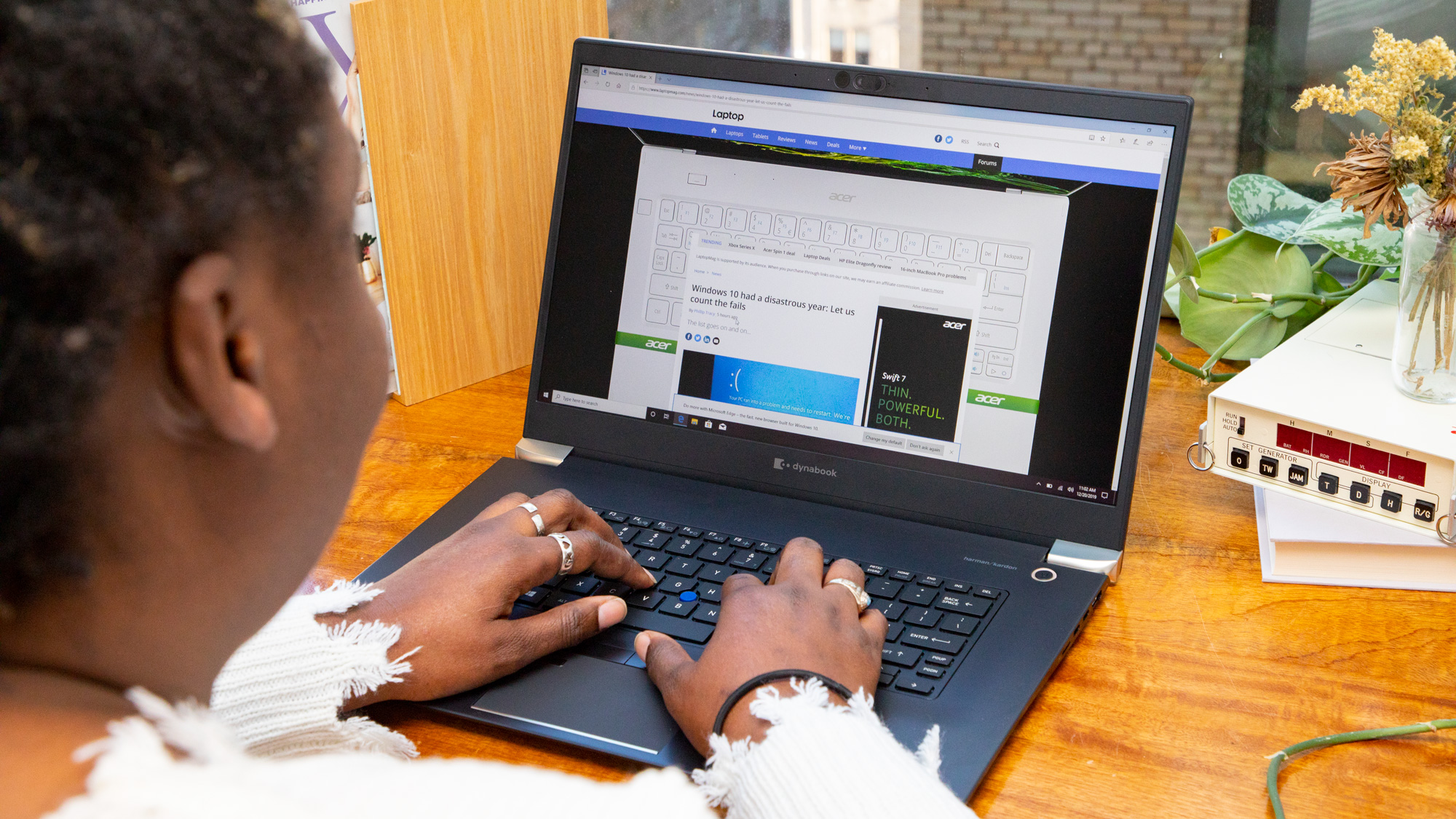
The benchmark score for the X50-F is 14,279 on the Geekbench 4.3 overall performance test, which is below the 16,264 category average. The Travelmate and Latitude 7400, which have their own Core i7-8665U CPU, notched 13,402 and 15,678, respectively. The X1 Carbon (Core i5-8265U) hit 15,589.
On the Handbrake video transcoding test, the X50-F took 20 minutes and 39 seconds to transcode a 4K video to 1080p, faster than the 21:05 average. However, the Travelmate (19:52). Latitude 7400 (19:27) and ThinkPad X1 Carbon (16:52) were all faster.
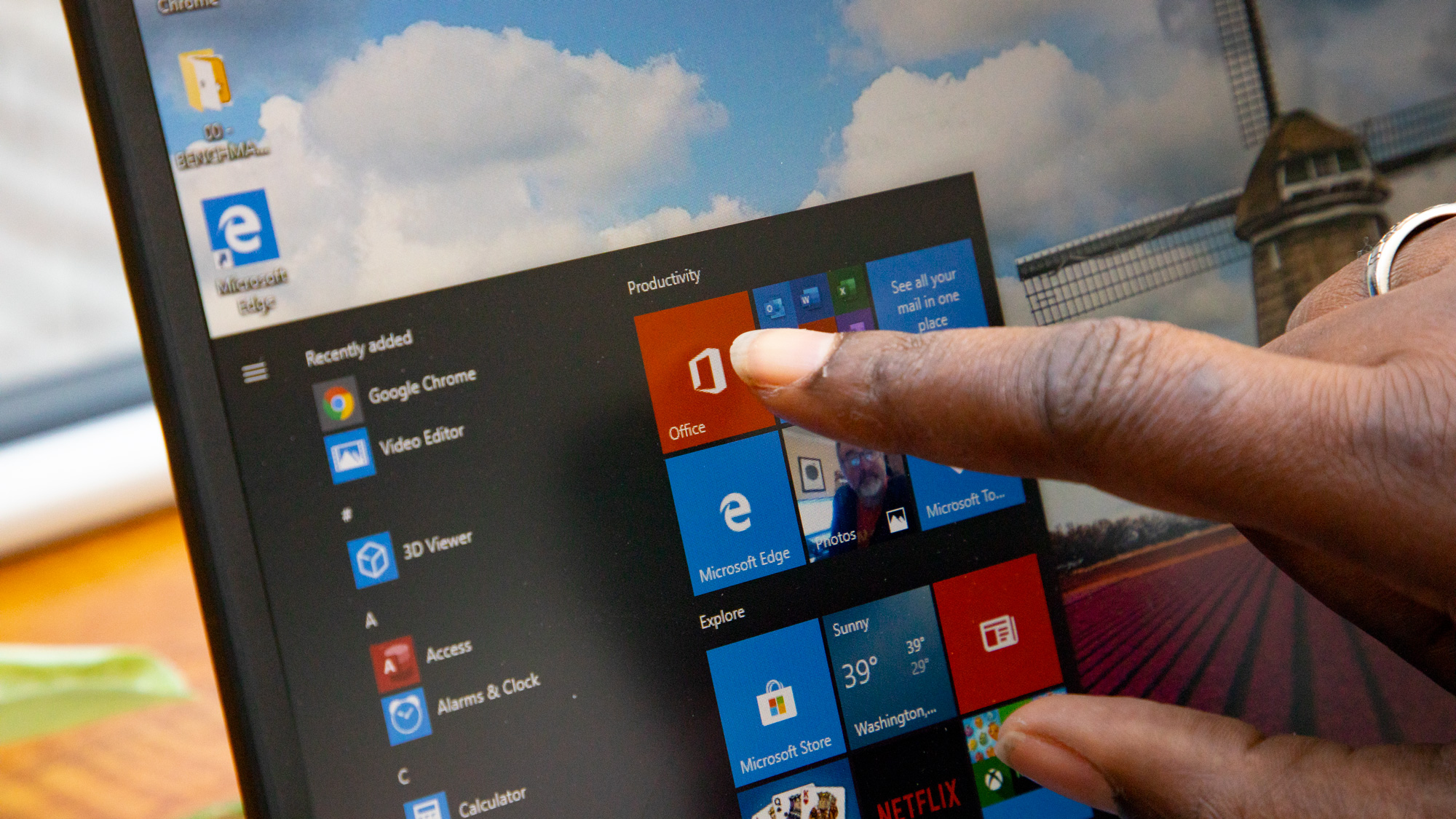
When we ran our File Transfer test, the Dynabook’s 256 GB m.2 SATA SSD duplicated 4.97 GB of mixed-media files at a transfer rate of 1,106.4 megabytes per second. That absolutely demolished the 521.9 Mbps premium laptop average. The closest the competition could muster was the Latitude 7400 (512GB m.2 PCIe NVMe Class 40 SSD), which reached 727 Mbps. The ThinkPad X1 Carbon (256GB m.2 PCIe NVMe Opal 2 SSD) and Travelmate (512GB m.2 PCIe NVMe) posted speeds of 424.1 and 462.7Mbps, respectively.
The Dynabook’s integrated Intel UHD Graphics 620 GPU doesn’t offer much graphics power, but it should be just fine for simple photo and video editing – AAA games are out, but older titles, indie and browser games should be good to go.
The laptop produced 27 frames per second on the Dirt 3 benchmark, short of the 58-fps average and our 30-fps playabilty threshold. The ThinkPad X1 Carbon and Latitude 7400, each equipped with a 620 GPU, scored slightly higher at 31 and 34 fps, respectively. The Travelmate’s discrete Nvidia GeForce MX250 Graphics GPU obtained an impressive 97 fps.
Dynabook Tecra X50-F battery life
Any business notebook worth its salt should last the length of an average 8-hour work day. Unfortunately, the X50-F fell just short of the mark, lasting only 7 hours and 55 minutes on the Laptop Mag Battery test (continuous web surfing over Wi-Fi at 150 nits of brightness). That’s well short of Dynabook's claim of a 17-hour battery life.
Still, it was enough to outlast the Travelmate's 7:34, but nowhere near the ThinkPad X1 Carbon's 9:30 and the 12:23 delivered by the Latitude 7400.
Dynabook Tecra X50-F webcam
Honestly, the webcam is no better or worse than any other integrated webcams we’ve tested. It takes photos and videos in not-so-glorious 720p and gets the job done in a serviceable manner, but that’s about it.
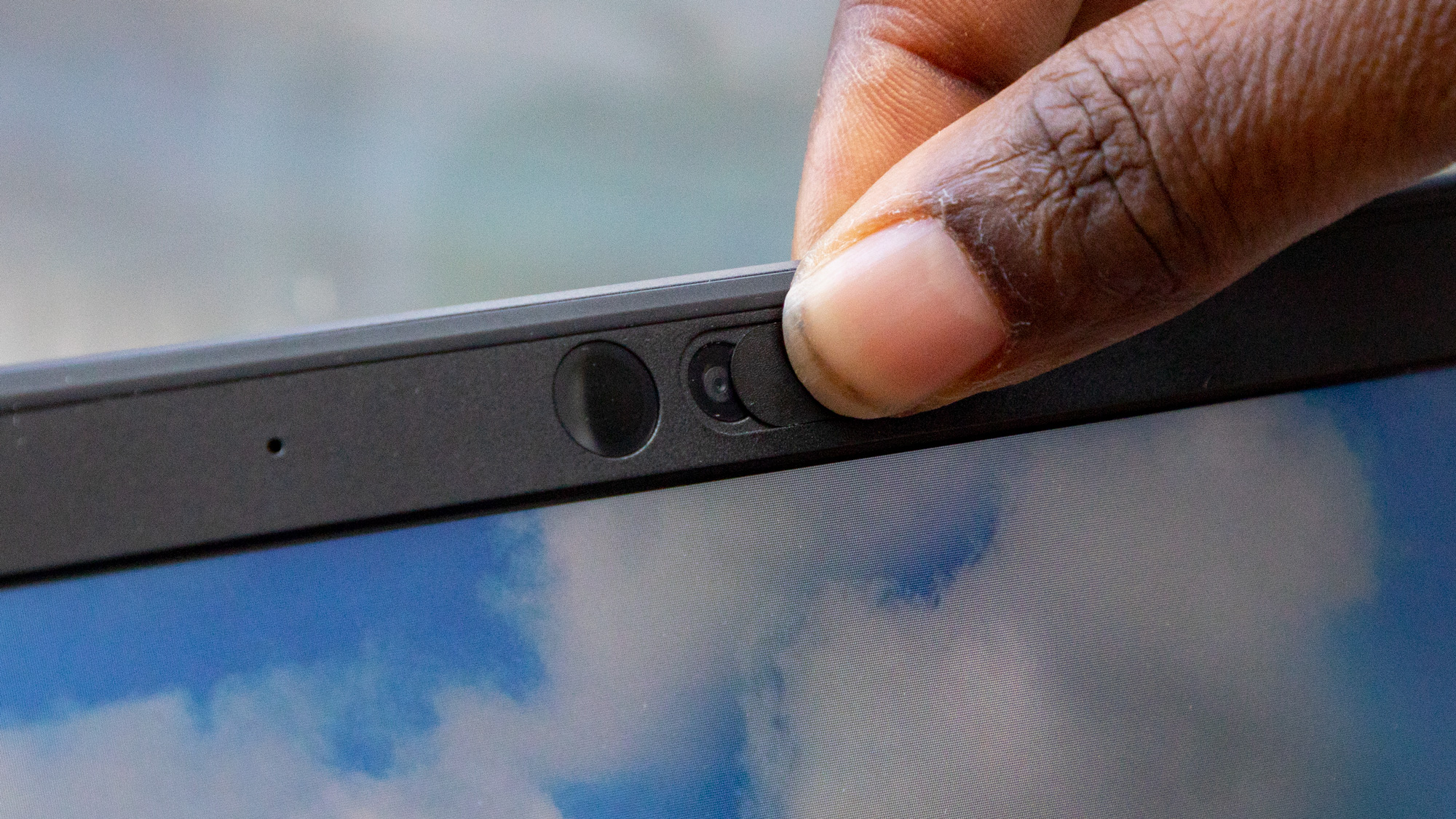
The best part about the camera is the rather cool privacy shutter that you can close on the device itself, so that you don’t have to resort to putting a piece of tape over the webcam. We recommend investing in an external webcam.
Dynabook Tecra X50-F heat
The Dynabook feels comfortable on your lap, and stays relatively cool as the underside averages 91 degrees Fahrenheit after running a 15-minute, full-screen video.That's well below our 95-degree comfort threshold for the touchpad (83 degrees) and the middle of the keyboard (89 degrees).
Dynabook Tecra X50-F software and warranty
I’m not typically a “tweaker” when it comes to my computer hardware, but I like the fact that I can do so if the mood moves me. The Dynabook’s utilities are diverse and practical – especially the ECO mode which lowers the screen brightness, reduces power consumption and shows you just how much power you are utilizing.

You can also adjust features such as whether the USB ports are always on to charge devices (i.e., a smartphone or gaming controller) with the Dynabook Settings app. The utility software is a definite bonus
In terms of the warranty, there is a three-year standard, international limited warranty that is offered with the X50-F, which goes a good deal above and beyond what most other hardware manufacturers offer these days.
Bottom Line
Dynabook is hoping to reboot Toshiba’s line of laptops under a new name, but unfortunately, the Tecra X50-F suffers from the ghosts of Toshiba past. For $2,144, you have a laptop that offers excellent transfer speed and solid security features, but misses the mark on everything else. For $1,949, you can get the Dell Latitude 7400, which has a better display, performance and battery life. Still, the Dynabook is a great choice for former-Toshiba fans who want to support its latest incarnation’s second act.
